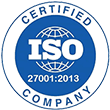Category: Managed IT
Understanding the Business Impact of Data Loss
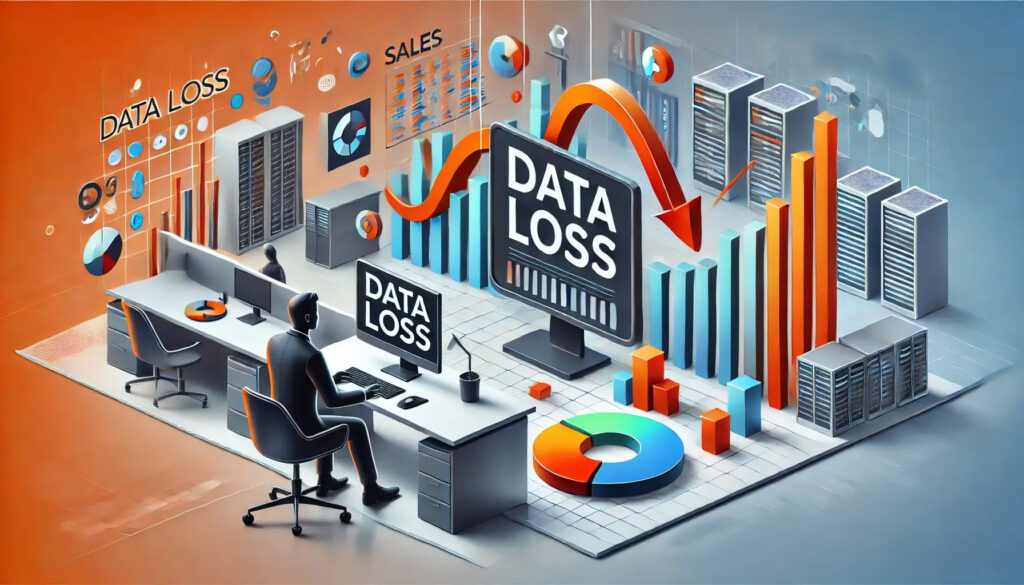
“Data is synonymous with modern businesses.” Most businessmen or businesswomen would agree with this statement because every element of a modern organization, be it marketing or strategies – is data-driven. However, this crucial element can cause a business’s downfall, too. A data breach alone can change the sentiments of not just users but the company’s investors. You may think it isn’t concerning. If you look at the number of data breaches in the first quarter of 2023, which was 6.41 million, you may reconsider your notion. Additionally, a breach is not the only form of data loss; destruction, deletion, and corruption are equally responsible. Destruction and deletion can be intentional and unintentional. Some organizations delete & destroy unuseful data, but in other cases, hackers do it. On the contrary, corruption occurs when data becomes unusable due to storage, transfer, or processing errors. Whether the data loss is due to technical failure, human error, or malicious attacks, it can halt operations and cause financial losses. Therefore, the life & death of your business depends on understanding the causes, impacts, and prevention methods thoroughly. The Inevitability and Causes of Data Loss Companies like Yahoo, Equifax, Facebook, LinkedIn, and various other big names have lost their data due to security breaches in the past. Mostly, there only a few reasons behind a data loss, such as: Economic and Operational Impacts of Data Loss Losing business data is not something you can quickly get over with. These losses have profound implications, such as: Strategies for Prevention and Management As per Security Magazine, about 25 percent of respondents rated their companies as “poor” or “fair” regarding the ability to detect and block threats. Follow these prevention methods if you don’t want to be among this percentage. Long-Term Consequences and Recovery For small and medium businesses, long-term consequences can be shut down if data is not recovered. Meanwhile, the giant whales, like Yahoo, get over it, but with a blot on their brand image for a lifetime. Protection Is Always A Smart Choice! This article serves as a reminder that not every business can survive the severe consequences of a data breach. It is necessary to reevaluate your data protection measures at every step and to Ask yourself – Are you doing enough to secure your and your user’s data? If not, then it is never too late to take the right step. For in-depth insights on best data protection practices, explore IMS Nucleii’s whitepapers – “Security Patching Made Simple: A Guide for Busy Businesses” and “The Future of Cybersecurity: Trends and Predictions for the Next Decade.”
How MDR Shapes Modern Defense Strategies

Managed Detection and Response (MDR) has emerged as а pivotal strategy in bolstering organizational cybersecurity postures. MDR involves outsourcing detection and response capabilities to security experts through а managed service model. It marries automation with human intelligence to proactively identify, analyze and address threats across an enterprise’s digital infrastructure. As attacks evolve in complexity and scale due to the rising exploitation of artificial intelligence, machine learning and work-from-home trends accelerated by the pandemic, adapting defensive measures through MDR has become imperative. Traditional security approaches mostly rely on preventative controls like firewalls, antivirus, and intrusion prevention systems (IPS). While such controls form the foundation, modern threats circumvent them with advanced evasion techniques. MDR transcends the limitations of conventional point solutions through comprehensive monitoring, early detection of known and unknown threats, and rapid containment of active incidents. This article analyzes how MDR has emerged as the preferred strategy to reshape cyber defenses aligned with evolving adversarial TTPs (tactics, techniques and procedures). The Imperative for MDR Since the onset of digital transformation, cyber risks have multiplied manifold with multiple entry points and vast attack surfaces. Simultaneously, threat actors have scaled operations leveraging underground markets for malware, open-source intrusion frameworks and outsourced labor. Ransomware, for instance, has burgeoned into а multi-billion-dollar criminal economy through RaaS (Ransomware-as-a-Service) affiliates readily weaponizing advanced evasion techniques and exploit kits. Traditional security approaches relying on preventative controls alone have grown insufficient against such sophisticated, multi-staged campaigns. While managed security service providers (MSSPs) offer outsourced monitoring and management, their reaction times remain high due to reliance on rules-based detection. MSSPs also lack the predictive capabilities and human oversight required to proactively identify unknown threats indicating advanced persistent attacks (APT). The dynamic, hybrid workforce model further exacerbates risks with personal and IoT devices directly interacting with business-critical systems. Work from home has made traditional perimeter-based defenses defunct by eradicating network boundaries. These shifts necessitate а proactive, enterprise-wide perspective for early detection of internal compromises and supply chain infiltrations before damage. MDR addresses such limitations through its predictive, holistic methodology. Core Components of MDR Services MDR leverages cutting-edge technologies, exploits and human security expertise to continuously hunt for known and unknown threats across clients’ IT environments. At the core of MDR operations are: Operational Advantages of MDR MDR substantially enhances organizations’ level of visibility and security posture through its predictive, enterprise-wide methodology. Some key operational benefits include: Strategic Benefits of Adopting MDR Adopting а managed MDR service conveys multifaceted strategic benefits that strengthen overall security postures and maximize risk management. MDR Vs. Other Security Solutions While MDR rises as the preferred strategic shift, it succeeds with legacy and complementary solutions versus replacing them. Below are some contrasts: Choosing the Right MDR Provider With MDR emerging the go-to strategy, selecting the right provider undergirds optimizing its security value proposition. Key considerations include: An ideal choice is IMS Nuclei – а leader in proactive defense against both known and unknown threats. IMS Nuclei’s team of experts and industry veterans, specialized in delivering unparalleled detection expertise through customized MDR, backed by а proprietary AI/ML-powered platform. Their integration, scalability, compliance and communications support make them the top MDR partner for optimizing cyber risk postures amid disruptive changes. Conclusion As businesses go digital and the threat landscape evolves, robust defense strategies must evolve correspondingly. MDR has emerged as the optimal model aligning prevention, early detection and efficient response capabilities with proliferating, sophisticated cyber adversaries. By outsourcing predictive security to dedicated, expert-augmented MDR services like IMS Nuclei that continuously learn evolving TTPs.
10 Signs You Need to Switch Your IT Services Provider

Many IT centric businesses opt for managed IT services for smooth, cost efficient, and secure IT operations. In 2024, the global IT spending will be worth USD 5 trillion. With this increased dependency on technology, companies simply cannot afford long downtimes, safety breaches and unchecked costs. Moreover, Outdated IT support can severely impact business performance and decrease productivity. Therefore, businesses should constantly reposition their IT strategies or even switch to a better IT service provider to make sure that they are making the most out of their IT investments. For scaling businesses, tech-centric corporations, decision-makers, and CTOs, here is how you know that you need to change your IT service provider. 10 Signs It’s Time to Change Your IT Services Provider Here are the top ten signs that indicate you should change your IT services provider as soon as possible. Nothing disrupts business operations or impacts overall performance and productivity more than regular network downtimes. It also has major financial implications. As per a recent survey, the cost incurred for an hour of downtime can go up to USD 100,000. Frequent interruptions in network availability suggest inadequate IT expertise or infrastructure management skills. Therefore, when connection problems are persistent, it is advisable to switch to an IT service provider that provides robust network solutions and keeps downtimes minimal. As the threat landscape has evolved dynamically, security has become a non-negligible aspect for businesses. Ongoing security breaches or lack of compliance with the latest cybersecurity protocols can have severe financial and reputational effects. Insufficient security measures endanger the overall business infrastructure, putting businesses in a very vulnerable position. IT services should help businesses with robust security solutions and strict compliance with cybersecurity standards and regulations. If the IT service provider compromises security strategy, consider shifting to better solutions. It is almost impossible to have zero disasters, business interruptions, outages, or other such crises. However, these unexpected events demand robust backup and recovery strategies that help regain business continuity with minimal impact. Slow or failed recoveries from data breaches or system failures indicate ineffective disaster recovery plans. If your current IT service provider fails to offer potent recovery strategies, search for other services that can provide comprehensive solutions for better preparedness during critical times. The technology space constantly evolves, and upgrading to these latest advancements helps improve business efficiency and productivity. It also ensures a competitive advantage with enhanced capabilities to adapt to the changing market requirements. Therefore, businesses must ensure that the digital infrastructure is updated frequently and that no obsolete technologies are used. If your IT service provider continuously uses outdated software and hardware that no longer meets industry standards, it’s time for change. It is impossible to define a fixed IT development blueprint that works for all businesses. Thus, there’s a need for scalable technical frameworks that can adapt to the changing business needs. An adaptive approach that makes sure that the IT infrastructure grows with the business without major infrastructural modifications and workflows remain seamless is exactly what scaling businesses need. If the IT support provider does not help you scale technology and operations up or, possibly down as per your needs, seek a provider that does. One of the primary reason for choosing a managed IT service provider is to ensure prompt and effective resolution of issues. The ideal IT service provider remains constantly prepared to assist, actively works to reduce the risk of IT failures, and minimizes downtime for seamless operations. It is advisable to carefully review the response times mentioned in the Service Level Agreements (SLAs) of the provider before making the choice. IT service providers should be well-equipped with the required resources and infrastructure to cater to the business’s technical demands. Additionally, they should keep up with the technical advancements, so that your company always has the competitive edge. If the provider seems unable to address complex technical issues or is unfamiliar with the latest technologies, there’s no reason why you should continue the service. Instead, look for an IT support team with dependable technical expertise and competent professionals. For smooth IT operations, businesses must constantly monitor their systems and regularly check for blockers and vulnerabilities. This helps them prevent security issues, unwanted disruptions, and unplanned downtime. If your managed IT team does not actively monitor and assess your IT resources, you need an IT service provider that keeps your performance in check constantly looks for ways to optimmise your operations. Transition away from managed IT service providers with rigid service offerings. Choose providers that embrace flexibility, allowing your business to adapt swiftly to technological advancements and market shifts. For example, with the adoption of IoT technology, a manufacturing firm needs extensive network modifications. Their existing IT service provider lacks the flexibility to update and secure this new network environment effectively, leading the firm to find a more capable provider. Transparent billing structures offer clarity and establish trust. They provide straightforward price information about the services they offer and the value they bring. Unpredictable billing structures and increased costs without clear justification or apparent improvements in service quality clearly indicate manipulation. Thus, if your IT support does not offer price transparency, it is another sign that you need reliable services. How to Transition Smoothly to a New Provider You must devise a strategic plan for a seamless transition to a new IT service provider. Here are some tips that make the process easier: The first step is to evaluate your actual business requirements and shortcomings. It will clarify the service features you need better and check for options accordingly. When choosing IT service providers, research extensively and check credibility before settling on any option. Avoid hasty decisions. Rather, look for providers with strong reputations and positive reviews that align with your business needs. After you make a list of potential service providers, try reaching out to them. Check if they can effectively cater to your requirements. Ask for detailed proposals and compare their services, costs, and case studies. For more confidence, speak to
Migrating Your Gmail to Office 365
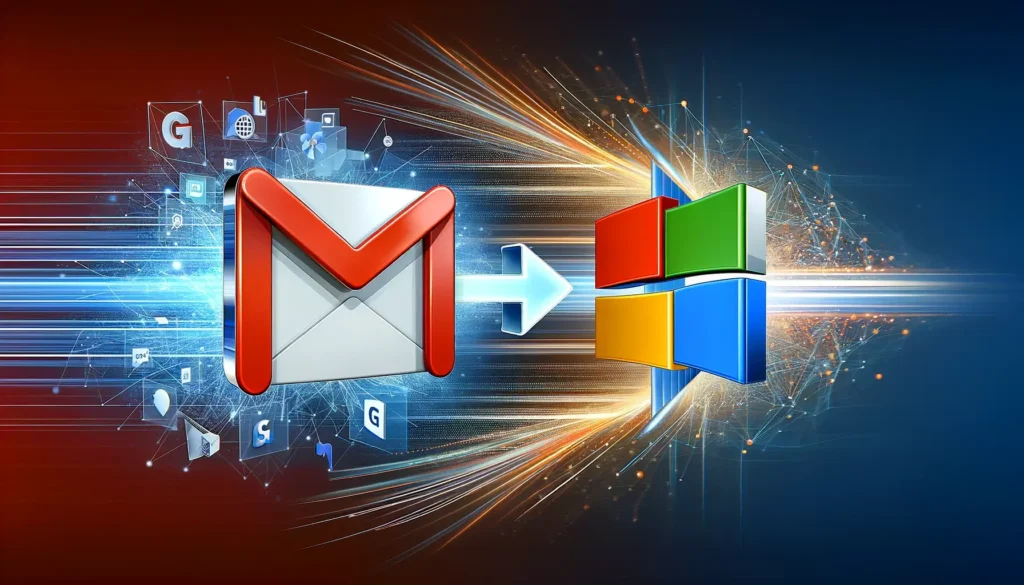
You might want to go from Gmail to the business productivity package from Microsoft. This guidance aims to assist you in seamlessly transferring critical data to the new Office 365 environment. A detailed guide explaining to users how to transfer their calendars, contacts, and emails from Gmail to Office 365. Exporting Your Emails from Gmail The first step is to remove all your important emails, contacts, and calendar events from your Gmail account. We’ll be using Google’s Takeout service to pull this data out of Gmail and save it locally in an industry standard.MBox file format. Set up Thunderbird Email Client Now that we have our exported Gmail data safely stored locally, the next step is to configure a desktop email client that can read the .mbox format. For this guide, we’ll be using the free and open-source Thunderbird. Importing Gmail Data into Thunderbird Now, it’s time to import the exported. Mbox files into Thunderbird. We’ll be using a handy add-on to streamline the process. Import Gmail to Outlook The core migration happens now – taking those imported Gmail emails and copying them over to your live Office 365 account. Verifying Migration Take a moment to double-check that everything migrated correctly. In Outlook on the web, verify all emails, contacts, and calendar events made over correctly. You may need to sync a calendar or refresh a contacts folder if items are missing. Check for any duplicate or misfiled information as well. Also, address any email rules, filters, or folders you had configured in Gmail – these won’t transfer automatically. Once everything looks in order, you’ve successfully migrated over from Gmail! Organizing and Customizing Your Office 365 Account Now that the heavy lifting is done, it’s time to get acquainted with your new Office 365 home. Take some time to organize and manage your migrated emails, contacts, and calendar events properly within Outlook’s powerful tools. You can also personalize your Office 365 experience through settings like adding a profile picture or background image. Explore the customization options for the various apps – like whether to show your calendar in Week or Month view. Don’t forget to enhance your security by enabling multi-factor authentication as well now that you’re using Office 365 commercially. Additional Tips Expect some challenges; no migration process is flawless. These additional services offer many opportunities to boost business efficiency. Your New Chapter with Office 365 This guide walked through the complete process of migrating user data from free and personal Gmail accounts over to the more robust Office 365 environment suited for business and team use. The major steps involved extracting information to local files using Google Takeout, setting up Thunderbird as an import/migration tool, transferring data between programs, and verifying successful migration. Users can now get settled into customizing and enhancing their new Office 365 experience. While migration comes with challenges, sticking to the outlined steps and troubleshooting issues should help users smoothly make the switch from their personal Gmail accounts over to Microsoft’s business productivity tools and services hosted within Office 365. Thank you for following along – all the best with your new Office 365 experience. Interested in a smoother, more secure Office 365 experience? Learn more about IMS Nucleii’s expert managed services and elevate your team’s collaboration.
Evaluating Your Managed IT Service Provider: 8 Must-Ask Questions

Choosing the right Managed IT Service Provider (MSP) is crucial for your business. These experts keep your IT resources running smoothly and performing optimally. But how exactly do you know you’ve picked the right one? In this article, we will highlight eight essential questions to ask while evaluating a managed IT service provider. But before we dive into these questions, we must understand why MSPs are so popular. The Rise of Managed IT Services Today’s companies count on technology more than ever, and managed IT services are becoming their go-to solution to ensure smooth operations. Let’s see why. Boosting business efficiency Managed IT services uplift business productivity by remotely handling complex technologies. These services offer tailored solutions that streamline processes while making it easier for a business to remain stable amidst growing technological reliance. Ultimately, this leads to heightened efficiency without the operational burden. Gaining a competitive technological edge Managed IT Services are the best path for organisations to leverage technological advancements for the better. They possess the right experience and knowledge to align technology with business goals and help companies navigate the digital landscape smoothly. Embracing tech-dependency: insights from the UK UK’s IT market growth is predicted at a CAGR of 10.36%. This data mirrors the escalating importance of Managed IT Services for tech-driven UK businesses. The rising number of internet applications and remote workforces working on distributed devices has led to a greater need for complete IT management. As 12.7% of full-time employees are working remotely, with another 28.2% adopting a hybrid work model, managed IT service providers are the next big thing. Understanding Managed IT Services In the UK alone, there are an impressive estimated 11,492 active Managed Services Providers (MSPs). Furthermore, the UK’s B2B sector sees 34% of firms outsource IT support. This highlights the importance of effective managed IT services. MSPs cover everything from network solutions to cloud management, keeping your tech updated and secure. This provides businesses with dependable and effective IT support on demand. Different types of services offered by MSPs MSPs deliver a wide array of services to support your business effectively. Here are a few: Trends in Managed IT Services Knowing about MSP services and capabilities is not the only thing that will help you determine the ideal service provider for your use case. You must also be updated with the trends that are presented below: Evaluate Your Managed IT Service Provider with these 8 must-ask questions Do you offer 24/7 live support? By asking about 24/7 support, you emphasise the importance of uninterrupted service. Thus shaping your partnership around availability and reliability. This question would also give you an estimation of the MSP’s commitment to maintaining your business continuity and handling crises outside standard operating hours. How do you manage cybersecurity? This question demonstrates your readiness to secure your business’s digital data. It brings to the forefront the MSP’s competency in handling potential cyber threats. Thus setting the expectation for stringent cybersecurity protocols. What is the average response time for incoming calls? By questioning their response time, you’re reinforcing your priority of prompt troubleshooting. It allows you to evaluate their efficiency in handling IT incidents, which directly impacts your performance. Can you provide me with customer references or testimonials? Asking for references communicates your interest in transparency and accountability. It enables you to gauge the MSP’s reputation and service quality through the experiences of others. This is like a reference check for a job interview. How do you ensure only authorised personnel access our data and systems? This question underlines the importance of the secure handling of your data. It highlights your expectations around their access control protocols. Thus ensuring only authorised individuals have permission to access your sensitive information. Can you provide an overview of your team? Seeking information about their approach to IT management displays the value you place on preventative measures. This question presses the MSP to disclose their strategies for preventing IT problems rather than merely reacting to them. Does your team take a proactive approach to IT? A proactive approach can catch issues and save precious resources before they interrupt your operational flow. Make sure that your Managed IT provider spends time preventing so that you don’t have to spend time recovering. Can your system reliably recover data in case of a system failure, disaster, or cyberattack? Ensure the MSP is prepared for unforeseen events so your business can bounce back like a seasoned marathon runner who quickly recovers and finishes even after stumbling. Choose IMS Nucleii: Your Trusted Managed IT Service Partner in the UK With IMS Nucleii, you get to: Seeking reliable IT services in the UK? Connect with IMS-Nuleii, the trusted partner for businesses aiming for reliability and excellence in managed IT solutions.
Managed IT Services for Remote Work Environment

As the world shifts towards remote work environments, reliable technology infrastructure becomes more crucial.
A Blueprint for Small Businesses to tackle IT challenges

Small businesses have a lot on their plate while battling for a competitive edge. Learn how steering around the technology challenges helps them achieve success.





